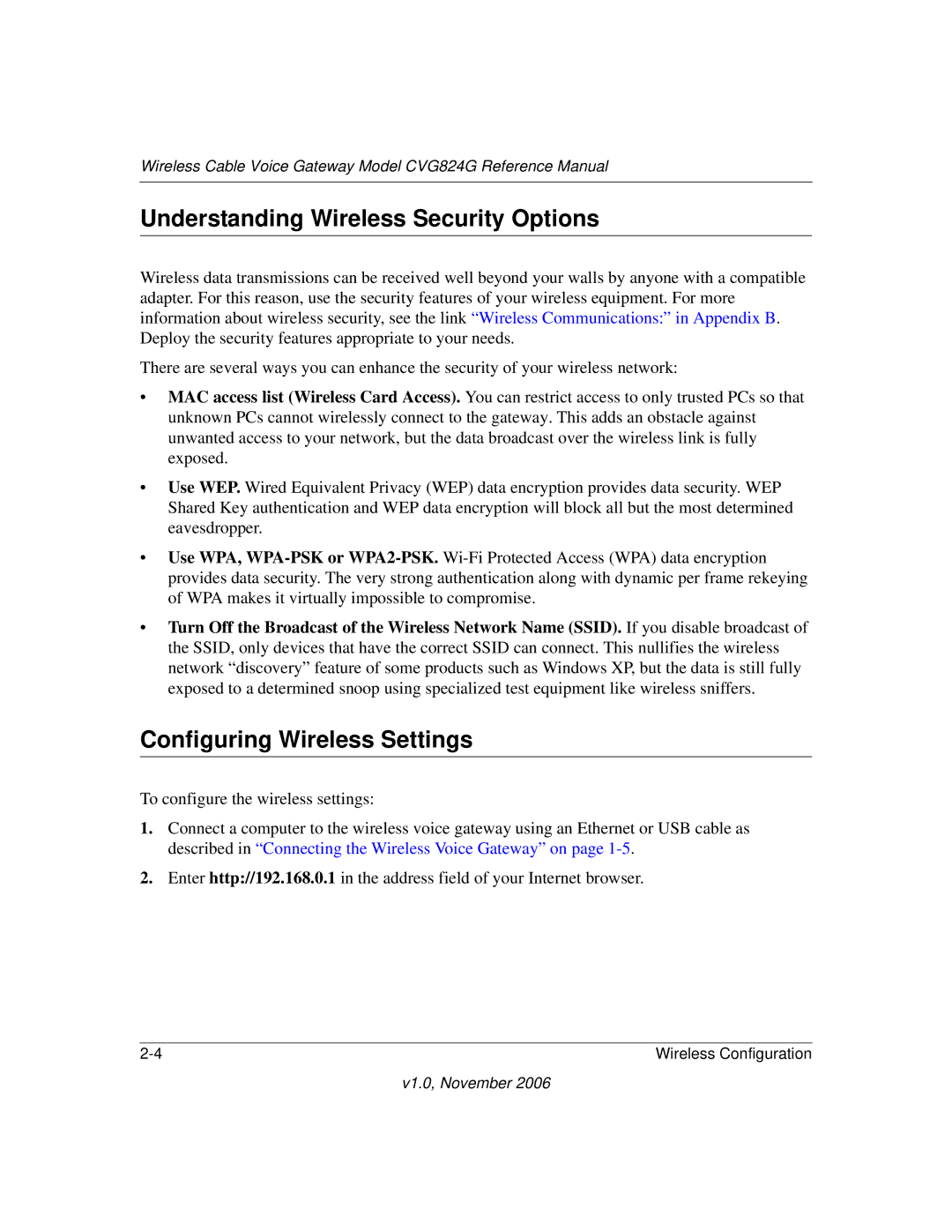
Wireless Cable Voice Gateway Model CVG824G Reference Manual
Understanding Wireless Security Options
Wireless data transmissions can be received well beyond your walls by anyone with a compatible adapter. For this reason, use the security features of your wireless equipment. For more information about wireless security, see the link “Wireless Communications:” in Appendix B. Deploy the security features appropriate to your needs.
There are several ways you can enhance the security of your wireless network:
•MAC access list (Wireless Card Access). You can restrict access to only trusted PCs so that unknown PCs cannot wirelessly connect to the gateway. This adds an obstacle against unwanted access to your network, but the data broadcast over the wireless link is fully exposed.
•Use WEP. Wired Equivalent Privacy (WEP) data encryption provides data security. WEP Shared Key authentication and WEP data encryption will block all but the most determined eavesdropper.
•Use WPA,
•Turn Off the Broadcast of the Wireless Network Name (SSID). If you disable broadcast of the SSID, only devices that have the correct SSID can connect. This nullifies the wireless network “discovery” feature of some products such as Windows XP, but the data is still fully exposed to a determined snoop using specialized test equipment like wireless sniffers.
Configuring Wireless Settings
To configure the wireless settings:
1.Connect a computer to the wireless voice gateway using an Ethernet or USB cable as described in “Connecting the Wireless Voice Gateway” on page
2.Enter http://192.168.0.1 in the address field of your Internet browser.
Wireless Configuration |
v1.0, November 2006
